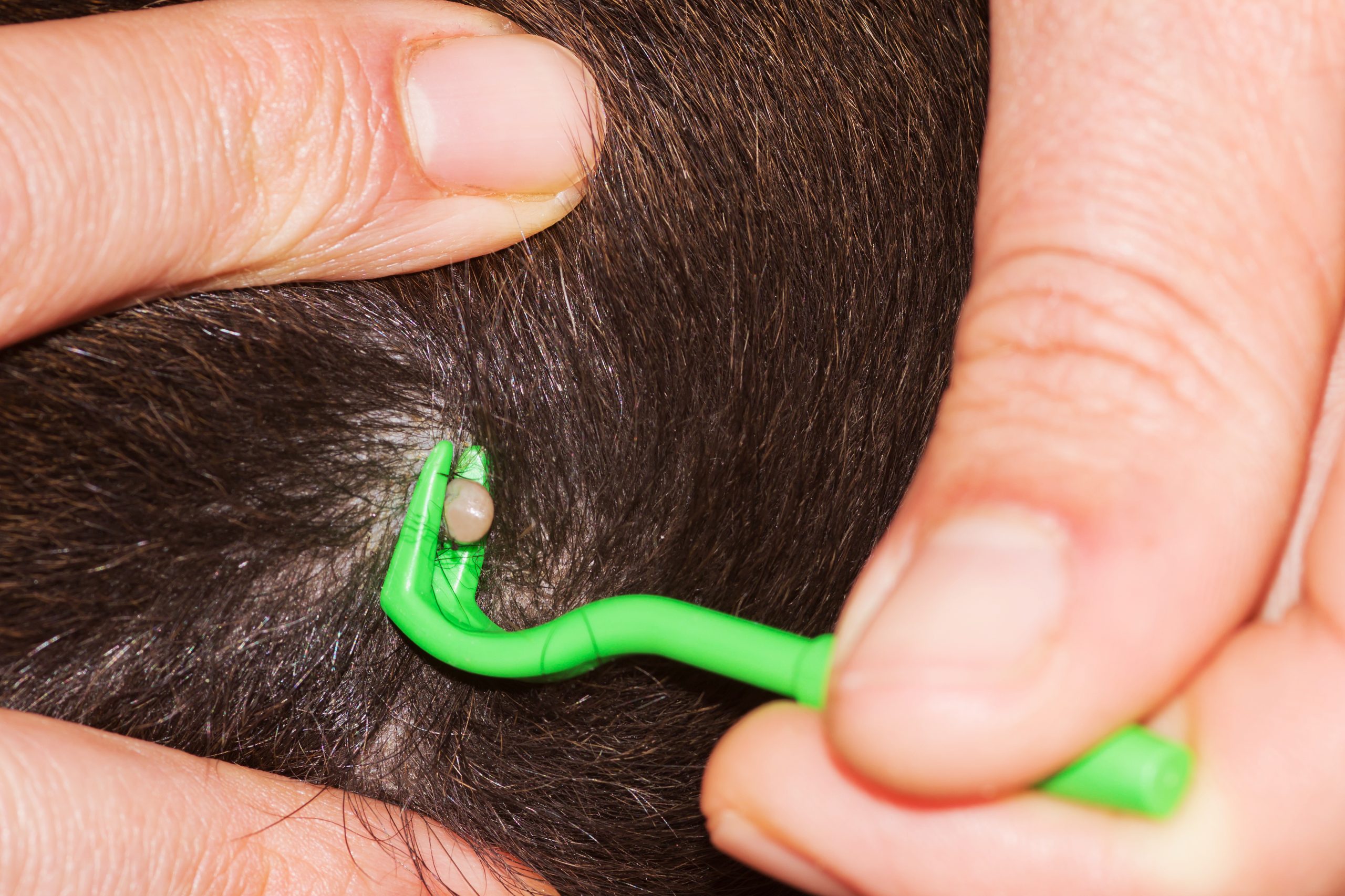Researchers report that tick populations are increasing across Michigan, and warm weather means these parasites are more active. Our Pierson Pet Hospital team understands your concern when you find a tick on your pet, and we answer your frequently asked questions about ticks, and how they affect pets.
Question: What ticks are found in Michigan?
Answer: Michigan is home to about 20 tick species, but only four can transmit diseases to your pet. These include:
- American dog tick — Adult American dog ticks prefer to feed on domestic dogs. They can transmit Rocky Mountain spotted fever.
- Blacklegged tick — Adult female blacklegged ticks readily attack pets. They can transmit Lyme disease, babesiosis, and anaplasmosis.
- Lone star tick — Lone star ticks are aggressive biters. They can transmit ehrlichiosis, tularemia, cytauxzoonosis, and Rocky Mountain spotted fever.
- Brown dog tick — Brown dog ticks are most commonly encountered indoors, attached to domestic dogs. They can transmit Rocky Mountain spotted fever.
Q: How do ticks transmit disease to pets?
A: Ticks locate a host by detecting the pet’s breath and body odors, and by sensing your four-legged friend’s body heat and vibrations. Ticks identify a well-used path, and wait to latch on to a vulnerable pet by crawling to the tip of grasses and shrubs. Here, they hold on using their hind limbs, and stretch out their front limbs. This questing behavior allows a tick to grab onto your pet when they are near. While feeding on your pet, a tick transmits disease in the following manner.
- A tick inserts its feeding tube through a pet’s skin, and secretes a cement-like substance to remain firmly attached.
- A tick’s saliva secretes an anesthetic property, so your pet doesn’t feel the attachment.
- A tick must remain attached for at least 12 hours to transmit most pathogens.
Q: What diseases can ticks transmit to my pet?
A: Ticks carry a variety of diseases. The most common tick-borne diseases in Michigan include:
- Lyme disease — Lyme disease is a bacterial infection caused by Borrelia burgdorferi.After infection, signs can take months to manifest and include fever, lethargy, enlarged lymph nodes, and shifting limb lameness.
- Anaplasmosis — Anaplasmosis is a bacterial infection caused by Anaplasma phagocytophilum.Signs include fever, lethargy, joint pain, vomiting, and diarrhea. In some cases, unexplained bleeding and nosebleeds occur.
- Babesiosis — Babesiosis is a protozoal infection caused by variousBabesiaspecies. Signs include fever, weakness, pale mucous membranes, swollen lymph nodes, and collapse.
- Ehrlichiosis — Ehrlichiosis is a bacterial infection caused by the rickettsial speciesEhrlichia canis. Signs include fever, swollen lymph nodes, respiratory distress, weight loss, bleeding disorders, and occasionally, neurologic abnormalities.
- Rocky Mountain spotted fever — Rocky Mountain spotted fever is a bacterial disease caused by Rickettsia rickettsii. Signs include fever, joint and abdominal pain, vomiting, diarrhea, and limb or facial swelling.
Q: How are tick-borne diseases diagnosed in pets?
A: Your veterinarian can diagnose tick-borne diseases based on your four-legged friend’s health history, signs, blood work to rule out other conditions, and assays to detect antibody response to the pathogen.
Q: How are tick-borne diseases treated in pets?
A: Your pet’s treatment depends on the specific disease they have contracted. However, many tick-borne diseases respond to a particular antibiotic class. Supportive care may be necessary if your pet develops a severe case.
Q: How should I remove a tick from my pet?
A: If you find a tick on your pet, you should remove it as soon as possible. Follow these steps:
- Use fine-tipped tweezers to grasp the tick firmly at the attachment site.
- Avoid twisting or crushing the tick because doing so can cause them to prematurely release pathogens.
- Steadily pull upward to dislodge the tick.
- Place the tick in alcohol so you can identify the species and determine if the pest can transmit disease.
- Use soap and water to clean the bite wound thoroughly.
- Monitor the bite wound for infection, and keep an eye on your pet for tick-borne disease signs.
Q: Can I contract a tick-borne disease from my pet?

A: While you can’t get a tick-borne disease directly from your pet, if your pet has been exposed to a tick carrying a pathogen, you have also likely been exposed to infected ticks. Many tick-borne diseases can also cause problems in people.
Q: Are cats at risk for tick-borne disease?
A: Tick-borne diseases in cats have not been as well researched as they have been in dogs. However, cats can be affected by these diseases, and indoor cats aren’t immune, because ticks can easily get into your house by hitching a ride on you or your dog.
Q: How can I protect my pet from ticks and the diseases they transmit?
A: Tick populations continue to increase and spread. To protect your pet from ticks, follow these tips:
- Provide tick prevention medication — Provide year-round flea and tick preventives to protect your pet. These products prevent a tick from staying attached to your pet long enough to transmit disease.
- Check your pet — Check your pet for ticks daily, especially after outings. Common tick hiding places include in and around your pet’s ears, around their eyes, under their collar, in their armpits and groin, under their tail, and between their toes.
- Reduce tick habitats — Reduce tick habitats around your home by mowing frequently, removing leaf litter, and clearing tall grasses and brush. You can also discourage tick-carrrying wildlife by constructing a fence to prevent them from entering your yard.
- Vaccinate your pet — A vaccine is available to protect your dog against Lyme disease. Ask your veterinarian if this vaccine is right for your pet.







Leave A Comment